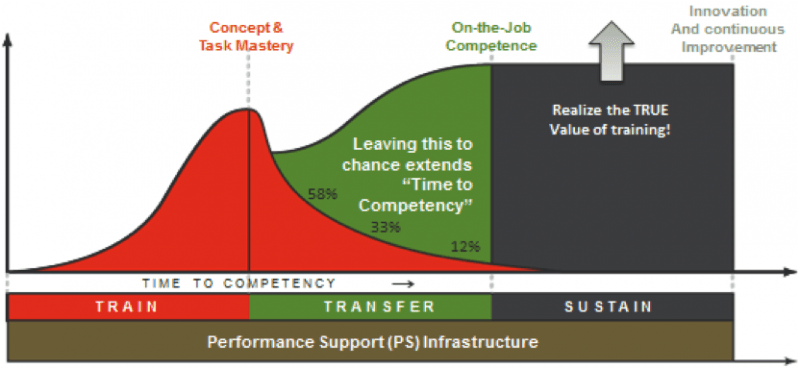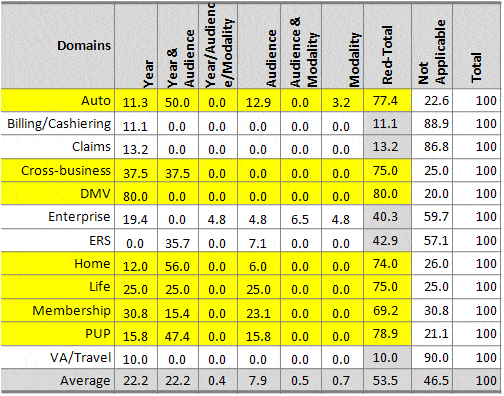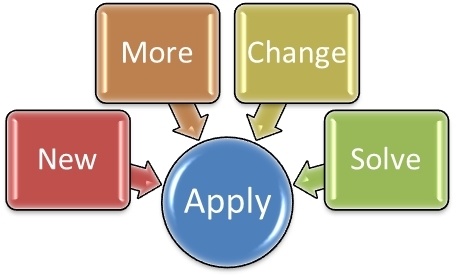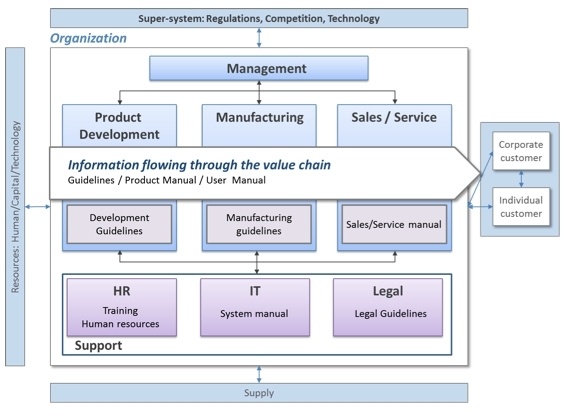Single Sourcing Design Strategy Series 1
From the Instructional Design to Performance Design
A Single Sourcing (Multi-Channel Information Distribution) Design (SSD) is a collaborative design method between Business Information Owners (BIOs) and instructional designers to sustain performance by providing training and performance support materials fetched from a single repository in a Learning Content Management System. This method requires instructional designers to get out of their box of traditional instructional design mentality and design the information flow and the knowledge intake process.
As an instructional designer, we are accustomed to design courses, a small chunk of training subjects. When we are asked to provide a course, we analyze the target audience, such as sales representatives, call center staff, or marketing professionals. We believe that our training will contribute a great value to the organization by supplying necessary information and learning activities.
However, it’s time to think about what values we are really trying to contribute to our organization. Is it training itself or improved organizational and individual performance? Based on a research by Michael M. Lombardo and Robert W. Eichinger (Lombardo & Eichinger, 1996), people learn approximately:
- 70% from on-the-job,
- 20% from feedback and by observing others and working, and
- 10% from courses and reading.
This is the reason why we should start thinking about the real solution for performance improvement.
The 70-20-10 model can be breakdown further by aligning the three aspects to “Five Moments of Learning Needs” suggested by Gottfredson, Conrad and Mosher, Bob (Gottfredson & Mosher, 2011):
- New: When people are learning how to do something for the first time
- More: When people are expanding the breadth and depth of what they have learned
- Apply: When people are acting upon what they have learned, which includes planning what they will do, remembering what they may have forgotten, or adapting their performance to a unique situation
- Solve: When problems arise, or things break or don’t work the way they were intended
- Change: When people need to learn a new way of doing something, which requires them to change skills that are deeply ingrained in their performance practices
They argue that the learned skills from training should be sustained, after training, by reinforced by performance support, focusing on apply, solve, and change.

From Learning Solutions Magazine (http://www.learningsolutionsmag.com/articles/949/)
Content Efficiency
There is another angle to look at our work in order to catch two birds, training and performance support, with one stone, the single sourcing design strategy, which is content efficiency. This is one of the key drivers of the single sourcing design strategy because we want to supply training and other performance support materials as economic as possible while effective, which means we want to distribute the same content to multiple channels, including e-Learning, Instructor-led, and blended learning courses as well as online help, knowledge management system, and each team’s SharePoint site, etc. By this, once we make changes on the content, all distributed content to multiple places instantly gets the changes without additional effort. The following image shows the concept. The Knowledge Repository, Master Curriculum, and the RLOs exist in the LCMS, managed and fetched to LMS, KMS, EPSS, etc.

rBIO: reusable business information object / rICO: reusable instructional content object
You might agree that multiple versions of the same content or documents exist in various stores in your organization, such as network drives, SharePoint sites, webpages, and so forth. It could be a nightmare when you hunt down all the materials to make a change regardless it is a simple text revision or more complicate one.
I audited internal information redundancy created by BIOs and a training team when I developed the single sourcing design strategy. I looked in to existing documents and training materials created, by BIOs and instructional designers between 2006 and 2009, and stored on online and offline drives. I identified the content redundancy rate by year, audience, and training modality. My finding surprised the executive of the training department. The content redundancy rate was overall 53.5% throughout the organization.
Red-Total: content redundancy total

Another finding was that the instructional designers in the organization have spent approximately 88% of their work creating business information with the help form Subject Matter Experts (SMEs), which is not their expertise but a Business Information Owner’s (BIOs), spending only 12% on the instructional content creation.

This suggests that we need BIOs not just SMEs. The main difference between the two roles is ownership, in other words, accountability. The BIOs are accountable for creating and managing their content while instructional designers are designing the whole picture of distributing the content in different ways to different places, sometimes with instructional materials for learning courses and other times without them for an Electronic Performance Support System (EPSS).
The Cost Benefit Analysis (CBA) of the suggestion projected a lot of expected cost savings each year. Basically it says that we earn $1.69 when spending $1 on the content creation and maintenance.
Unit: hour, %, $

Earned value ($1.69): $94.4 ÷ $55.7 (Averaged labor cost per hour in the model company)
Even though the CBA looks attractive, it might not be possible to actually gain the CBA without an effective knowledge and information architecture, knowledge repository design, and including information hierarchy design. The LCMS is an expensive system. So it’s possible that you might waste of the budget.
Throughout a series of my posts, I will share my experience in the single sourcing design from the learning, performance management, knowledge management, and information architecture perspective.
You may also find useful:
- Single Sourcing Design Strategy Series 1: Why Does Single Sourcing Design Matter for Learning and Performance Support?
- Single Sourcing Design Strategy Series 2: Determining if Single Sourcing Design Strategy Fits My Organization’s Business Needs.
- Single Sourcing Design Strategy Series 3: A Centralized Knowledge Repository Model and the structure of the Reusable Information Object (RIO) and the Reusable Activity Object (RAO).
Bibliography
- Gottfredson, C., & Mosher, B. (2011). Innovative Performance Support. New York: McGraw Hill.
- Lombardo, M. M., & Eichinger, R. W. (1996). The Career Architect Development Planner (1st ed.). Minneapolis: Lominger.








